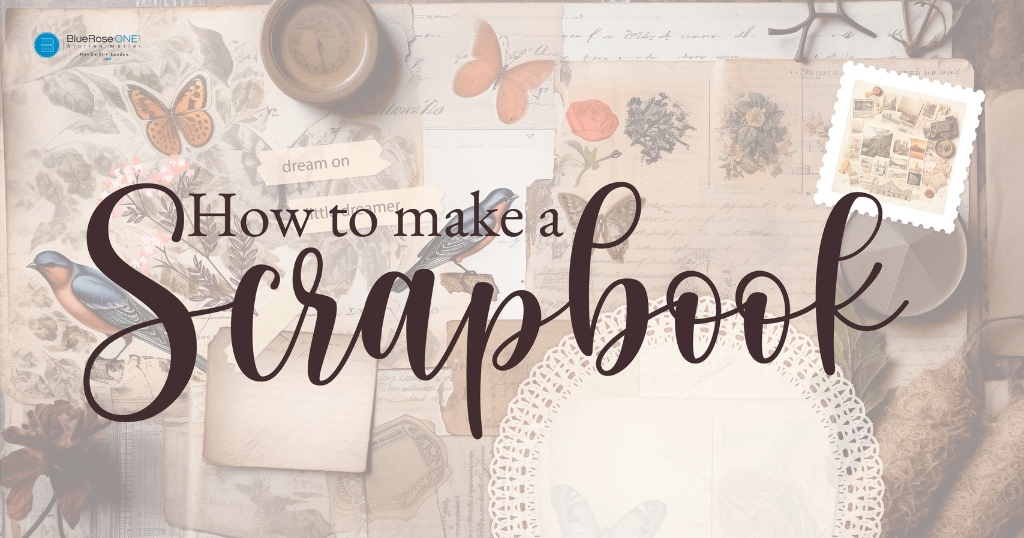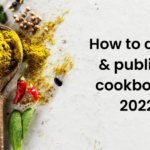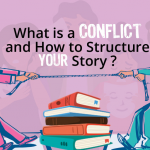Scrapbooking is a fun and creative way to keep memories alive, tell tales, and capture the spirit of treasured experiences. It’s a technique that has been passed down through centuries, and it allows you to turn ordinary images and souvenirs into lovely, unique keepsakes. In this complete introduction, we’ll look at the art of scrapbooking, from the basics to the many varieties and the educational advantages.
What is scrapbook making?
Scrapbooking is a creative and emotive activity that involves organising and decorating images, keepsakes, and mementos in an aesthetically appealing and emotionally significant way. Its core is in creating a unique and personal picture of a specific event, era, or subject.
Scrapbooking acts as a conduit for converting these beloved moments into permanent memories, whether it’s preserving the enchantment of a wedding day, cherishing the arrival of a new family member, or immortalising the adventures of a voyage.
Read: An easy guide on how to create a comic book and get it published in 2023.
Scrapbooks come to life as physical archives of beloved memories via the careful selection of images, the inclusion of tangible items, and the addition of meaningful journaling.
The major goal is to capture the essence of these experiences so that they may be relived. In essence, scrapbook making is an art form that combines creativity, storytelling, and nostalgia, offering a beautiful and personal way to treasure life’s most significant events and experiences.
The 3 Main Elements of a Scrapbook
- Photographs: Photographs are the heart of any scrapbook. They capture the moments you want to remember and tell the story visually. Choose a variety of photos that represent the event or period you’re documenting. Be sure to include candid shots, portraits, and images that convey the atmosphere and emotions of the moment.
- Journaling: Journaling provides context and adds a personal touch to your scrapbook. It’s a way to share your thoughts, feelings, and memories related to the photographs. You can write short captions, anecdotes, or even longer stories to complement the visual elements. Journaling helps future generations understand the significance of the moments captured.
- Decorative Elements: The creative aspect of scrapbooking comes alive with decorative elements. This includes using various materials such as patterned paper, stickers, ribbons, washi tape, and embellishments like buttons, sequins, or brads. These elements add visual interest, texture, and personality to your pages.
The Benefits of Scrapbooking
Scrapbooking offers a multitude of benefits beyond just creating beautiful keepsakes.
- Preservation of Memories:
Scrapbooking is an effective method for archiving and conserving your most treasured memories. Scrapbooks provide a physical and long-lasting measure of preservation in an age when images can fade and digital data can be lost or corrupted. You may build a physical record of your life’s most significant events by meticulously organising images, memories, and memorabilia on acid-free sheets. These scrapbooks work as a time capsule, preserving your memories for future generations. The rich colours, textures, and personal touches recall not just the photographs but also the emotions and tales linked with each memory as you turn through the pages. Scrapbooking is a labour of love committed to preserving your unique history and ensuring that your legacy goes on in perpetuity. - Creative Outlet:
Scrapbooking is an amazing combination of creativity and self-expression. It allows you to express yourself artistically while creating something incredibly important. You begin on a creative journey with each scrapbook page, picking colours, patterns, and decorations that reflect your personal style and the spirit of the memories you want to preserve. It’s a type of artistic narrative in which you play the roles of author, illustrator, and designer all at once. The act of choosing, organising, and adorning things on a page allows you to inject your individuality into each project. This creative outlet not only honours your memories, but it also feeds your spirit, giving you a sense of success and fulfilment. Scrapbooking goes beyond conventional artistry to become a visual representation of your deepest ideas and feelings. - Stress Relief:
In a fast-paced world filled with demands and distractions, engaging in a creative activity like scrapbooking offers a therapeutic escape. It provides a sanctuary of calm and mindfulness, allowing you to disconnect from the pressures of daily life and focus on the present moment. The rhythmic process of selecting materials, designing layouts, and adhering photos can be meditative, reducing stress and anxiety. As you lose yourself in the world of scrapbooking, worries melt away, replaced by a sense of tranquility and accomplishment. The act of creating something beautiful with your own hands is inherently satisfying, and the physicality of scrapbooking engages your senses and promotes relaxation. It’s a constructive way to channel your emotions, reflect on your memories, and find solace in the soothing rhythm of artistic expression. Scrapbooking is more than a hobby; it’s a therapeutic journey of self-care and stress relief. - Improved Organisation:
Scrapbooking is more than simply a creative outlet; it is also a motivator for better organisation. When you start a scrapbooking project, you feel forced to label and organise your images and mementos in a methodical manner. This sorting and classifying procedure allows you to unearth long-forgotten gems and guarantees that each memory has its proper place. You improve your capacity to retrieve and appreciate your memories by creating topic pages or chronological albums. Scrapbooking gives structure and order, whether it’s arranging a lifetime of family images, preserving a memorable event, or chronicling a year of activities. It’s a sensible way to organise your photo collection and turn it into a cohesive story. You not only acquire a stronger connection to your memories by embracing this innovative organising tool - Stronger Bonds:
Scrapbooking extends beyond the realm of personal enjoyment; it’s a delightful opportunity to strengthen bonds with loved ones. Sharing your meticulously crafted scrapbooks with family and friends invites them into your world of memories. It becomes a platform for storytelling, reminiscing, and connecting on a profound level. As you flip through the pages together, each memory becomes a conversation starter, sparking laughter, tears, and cherished anecdotes. It fosters a sense of togetherness and nostalgia, creating lasting memories in the process. Collaborative scrapbooking projects can bring loved ones closer as they contribute their own perspectives and stories to the pages. Whether it’s flipping through a childhood album with parents, reliving a vacation with friends, or creating a family heritage scrapbook, this shared experience strengthens the emotional bonds that hold relationships together. Scrapbooking is more than a solitary endeavour; it’s a tool for weaving the threads of connection and creating enduring memories together.
You may also like: What is Denouement in Literature? Definition and Importance
Scrapbook Making in Education
Scrapbooking isn’t just a hobby; it can also be a valuable educational tool. In the classroom, scrapbooking can enhance learning experiences in various ways.
- Enhanced Creativity:
Scrapbooking in the classroom fosters kids’ creativity by giving them a hands-on, artistic outlet. It inspires kids to think outside the box, to experiment with different materials, and to create visually appealing layouts. Students learn to choose colours, patterns, and decorations that successfully represent their thoughts. This creative process not only improves their artistic abilities, but it also promotes individuality and self-expression. Scrapbooking gives students the ability to turn their ideas and experiences into concrete, visually beautiful compositions, allowing them to embrace and celebrate their individual creative voices. - Improved writing skills:
Scrapbooking includes writing as an essential component of the narrative process. Along with their artistic works, students are encouraged to chronicle their ideas, emotions, and experiences. This practice helps them improve their writing abilities, from descriptive language to story structure. Students learn to explain their thoughts eloquently and vividly via journaling, which improves their ability to communicate and express themselves effectively in writing. Scrapbooks become not just visual records but also textual tales, promoting a comprehensive approach to storytelling and language development. - Historical Understanding:
Integrating scrapbooking into history lectures can help students have a better grasp of historical events and individuals. Students practice critical thinking and historical analysis by researching and producing scrapbook pages on historical periods or noteworthy individuals. They learn how to choose and arrange material, identify crucial details, and contextualise historical truths. Scrapbooking turns abstract historical concepts into physical, aesthetically memorable representations, bringing history to life and encouraging a more in-depth, meaningful understanding of the past. - Visual Literacy:
Scrapbooking cultivates visual literacy skills by encouraging students to analyse and create layouts that are visually engaging and effective. Students learn about composition, balance, contrast, and the impact of colour and imagery. They develop an understanding of how visual elements work together to convey messages and emotions. Through this process, students become more discerning consumers of visual information, capable of interpreting and critiquing visual media effectively. Scrapbooking not only nurtures their ability to create visually appealing projects but also equips them with valuable skills for interpreting the visual world around them. - Project Management:
Scrapbooking projects provide a realistic platform for students to learn project management skills. Students must organise different areas of their scrapbook projects, from creating the layout to organising supplies and giving time for completion. They learn the value of setting objectives, remaining organised, and efficiently managing their time in order to fulfil deadlines. These abilities may be used in numerous facets of their academic and personal lives, cultivating habits of accountability, organisation, and effective time management. Scrapbooking projects give students a controlled, hands-on chance to build important project management skills that will serve them well in the future.
You may also like: Never Say Goodbye a Book By Hilary Green
What to Put in a Scrapbook?
When deciding what to include in your scrapbook, consider the following elements:
- Photographs: Choose a variety of photos that represent the event or theme. Be selective but inclusive of candid shots, portraits, and details.
- Memorabilia: Include items like tickets, programmes, postcards, or any physical mementos that relate to the event or memory.
- Journaling: Write captions, anecdotes, or stories that provide context and meaning to the visuals.
- Decorative Elements: Use decorative materials to enhance the visual appeal of your pages. Be creative with paper, embellishments, and colours.
- Layout and Design: Pay attention to the layout and design of your pages. Consider balance, symmetry, and visual flow.
You may also read: List of Top 10 Famous William Faulkner Books of All Time
Types of Scrapbooking
Scrapbooking comes in various forms, allowing you to choose the style that suits your preferences.
- Traditional Scrapbooking: The classic method involves physical materials like printed photos, paper, and embellishments. It’s a hands-on and tactile approach.
- Digital Scrapbooking: Digital scrapbooking is done on a computer using design software. It offers endless possibilities for creativity and customization.
- Pocket scrapbooking: This style uses pocket pages and pre-made cards to simplify the process. It’s great for those who prefer a faster approach.
- Mini Albums: Mini albums are smaller, focused scrapbooks that cover specific themes or events. They make for delightful, compact keepsakes.
- Hybrid Scrapbooking: A blend of traditional and digital scrapbooking, this approach combines printed elements with digital designs.
The Main Purpose of a Scrapbook
The main purpose of a scrapbook is to preserve memories, celebrate moments, and tell stories. It’s a creative outlet for self-expression and a way to share your life’s journey with others. Whether you create a scrapbook as a gift, for personal reflection, or as a means of documenting history, the essence remains the same: to capture the beauty of life and its precious moments.
Read: Here’s a List of 15 Latest Marketing Trends to Promote Your Book in 2023.
Scrapbooking is an enthralling combination of creativity, narrative, and memory keeping. It enables you to create one-of-a-kind, physical representations of the most important events in your life. The thrill of making and sharing these personal treasures spans generations, whether you’re a seasoned scrapbooker or a novice.
So gather your scrapbook photographs, immerse yourself in this rewarding activity, and begin on a creative trip through your treasured memories.
Good luck with your scrapping!
















